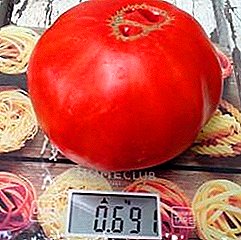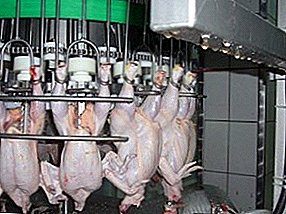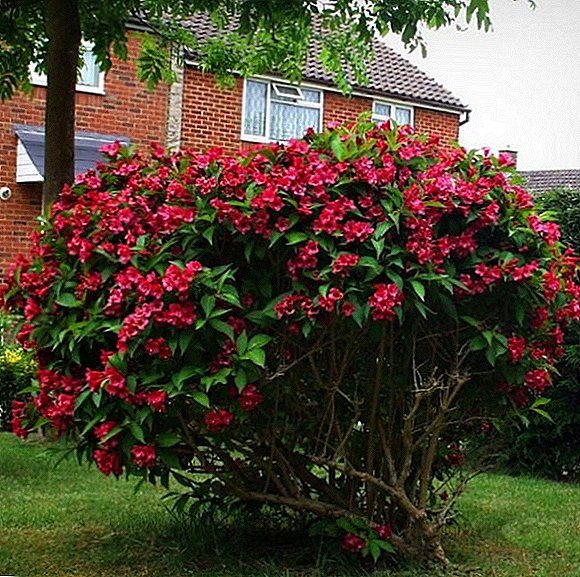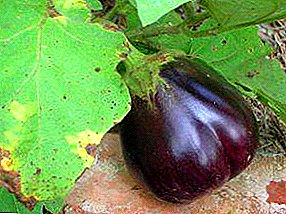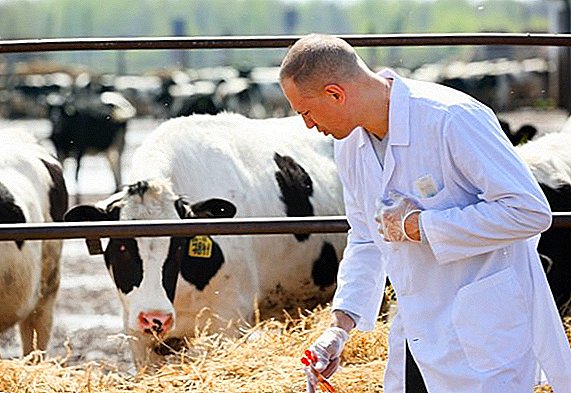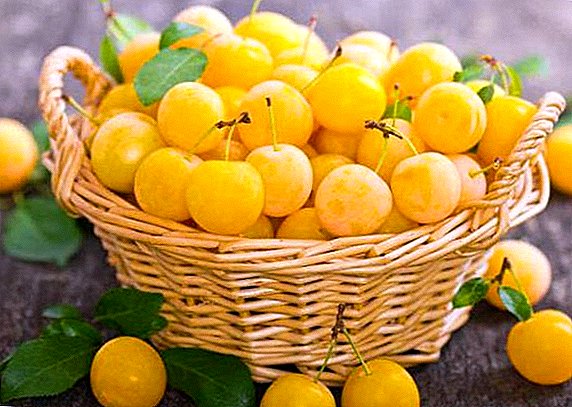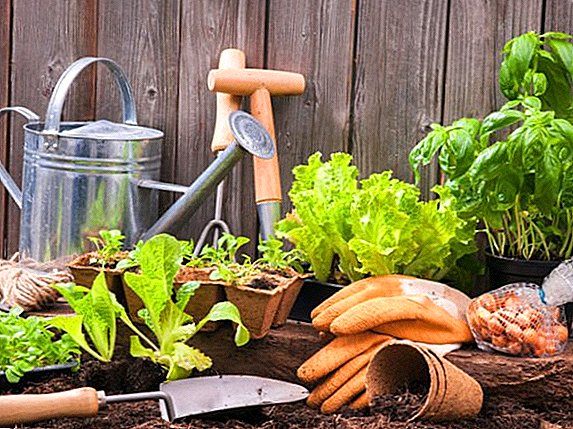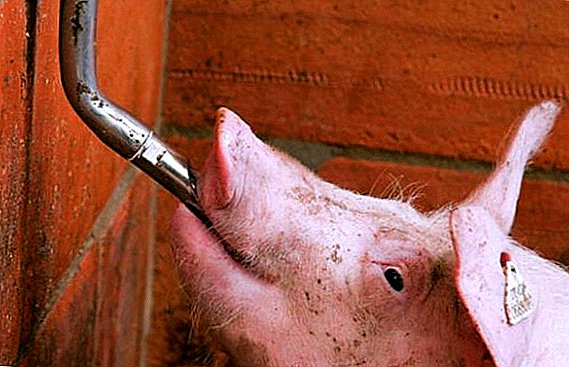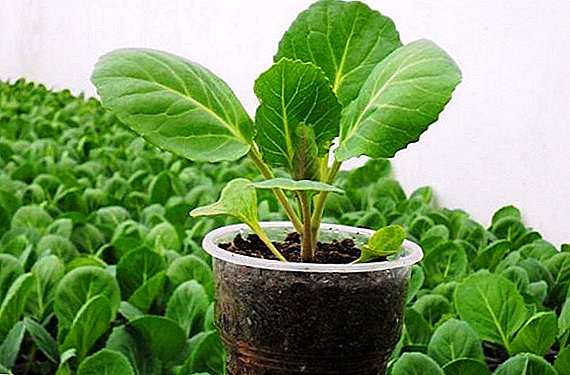 In the northern regions, sowing cabbage immediately into open ground is very risky, as the possibility of frost remains. For this reason, cabbage is grown in a seedling manner that involves picking.
In the northern regions, sowing cabbage immediately into open ground is very risky, as the possibility of frost remains. For this reason, cabbage is grown in a seedling manner that involves picking.
Today we will find out how to swoop cabbage at home, what it will give us and in what cases a pick is not required. Let's talk about the rules of cauliflower picks.
Process assignment
It is worth starting with a discussion of the process in order to understand why picks are needed and whether cabbage really needs it.
Pickling cabbage seedlings - this is the process of transplanting young seedlings to a larger container at the moment when the plant needs more substrate than is currently available.
Important! It is necessary to distinguish the pickling of seedlings in a larger container as they grow from moving to open ground or a greenhouse.
At the time of planting and germination, the seed requires only a sufficient amount of moisture and oxygen in the soil, however, as the root system grows and develops, the priorities change. It is possible to compare the picking with the change of clothes, which has become small for a child, but it is worth understanding that such a comparison only reflects an increase in vessel volume.  The fact is that the lack of picks as they grow leads to the fact that the root system does not have enough space for development. She begins to weave, get out of various holes.
The fact is that the lack of picks as they grow leads to the fact that the root system does not have enough space for development. She begins to weave, get out of various holes.
Such a process cannot be called normal, since the growth of the root system implies the need for additional nutrients. And if, after an increase in the root mass, the supply of everything necessary for growth and development remains at the same level, then growth is inhibited, and the plant itself suffers from a lack of "feed."
Did you know? The wild-growing "relative" of white cabbage has not yet been established. Some scientists believe that the Mediterranean coast is home to cabbage, others are the coastal part of Georgia.
It should be understood that if you solve this problem by initially planting seeds in large containers, you will get the exact opposite effect. A large amount of substrate is capable of retaining more moisture, which leads to the development of various pathogenic organisms in the soil.
Direct pick destination - to increase the area for nutrition and development of rhizomes. The secondary purpose is to facilitate the process of planting cabbage in open ground or greenhouse / greenhouse.
Features of cabbage pick
Next, we discuss the main features of the process, let's talk about when and how to dive cabbage, so as not to damage the seedlings and maintain growth and development rates.
The pickling of seedlings is one of the most important processes in the original technology of tomato cultivation, developed by the Terekhins family.
When
A pick of cabbage at home is given at the stage of formation of two cotyledon leaves. Rassad at this point should be about a week.
Tighten the process of diving is not worth it, because the younger the plant, the faster it will take root in a new place. For this reason, the maximum age of the seedlings, after which there is no point in making any transplants, is 16 days from the moment the first green appears.  A later transplant will result in stunted growth and development, and some plants will die altogether.
A later transplant will result in stunted growth and development, and some plants will die altogether.
Important! Cotyledon leaves are those that first appear in germinated seeds. Do not confuse cotyledon leaves with the first true leaves.
Where
Repot young cabbages need in appropriate single container, so that later, when landing in open ground, the rhizomes should not be separated.
Specifying the exact volume of the container is meaningless, since each individual plant, depending on the volume of the root system, requires a larger or smaller vessel. An average reference point can be considered a half-liter plastic cup in which the grown root should fit.
The market today provides us with ample opportunities in the selection of auxiliary materials for horticulture and gardening. Many gardeners have already appreciated the convenience of peat tablets and cassettes when growing seedlings.
It is worth remembering that you need to use cups of dense plastic for planting, since they emit fewer dangerous substances when in contact with moisture. It is extremely dangerous to use cut bottles, as the print on the outside of the bottom of the container indicates that the bottle is not intended for reuse.
We recommend that you spend your time and purchase small pots in a flower shop that can be reused.  Now let's talk about the ground. You need to use a substrate that is identical to the one in which seedlings were previously grown. Such an approach will help cabbage to get used faster and grow. To prevent the cabbage from starving, add 10 g of potassium chloride, 20 g of superphosphate and 20 g of ammonium nitrate to a bucket of soil. In this way we will ensure the presence of the NPK group, which is necessary for growth and development.
Now let's talk about the ground. You need to use a substrate that is identical to the one in which seedlings were previously grown. Such an approach will help cabbage to get used faster and grow. To prevent the cabbage from starving, add 10 g of potassium chloride, 20 g of superphosphate and 20 g of ammonium nitrate to a bucket of soil. In this way we will ensure the presence of the NPK group, which is necessary for growth and development.
You can also add a small amount of humus or compost, but remember that the fertilizer must be decontaminated, since the “young” is very weak and will not be able to resist the parasites.
Important! The NPK group includes nitrogen, phosphorus and potassium. These elements can be applied to the soil using complex fertilizer. The ratio of basic elements must be identical to the above.
how
Now let's talk about how to dive cabbage on seedlings.
At the stage of the appearance of two cotyledon leaves, the seedlings have a very weak rhizome, which can be easily damaged. It is for this reason that before transplanting it is necessary to water the soil so that the rhizome can be completely removed from the substrate.
We advise you to read about the seedling method of growing different types of cabbage: red cabbage, Savoy, kale, pak choi.
It should be understood that even the thinnest root processes, which the root system will lose, can adversely affect the survival rate. And pathogens can easily fall into small wounds. Therefore, after extracting seedlings from the ground, each individual plant should be dipped in a weak rhizome of potassium permanganate solution (10 drops per 10 liters of water).  We will sort out the cabbage transplant process in stages:
We will sort out the cabbage transplant process in stages:
- Slowly remove the seedlings, holding it exclusively for the cotyledon leaves. You can use a fork for fish, or make something similar from a wire.
- After extraction inspect the roots. Too long need to shorten by 1/3 scissors. Seedlings with a strongly crooked or zigzag rhizome are removed.
- We make a recess in the soil (the vessel into which we are transplanting), which should correspond to the length of the root. Immerse the plant to the point of growth, sprinkle with earth and slightly compacted, so that the stem to the point of growth does not strongly protrude above the ground.
- Liberally moisten the substrate and move it to a dark place for two days.
Important! If the soil in which the plant is spiked is already wet, additional watering is not required.
Features cauliflower picks
In terms of picking cauliflower, kohlrabi and broccoli are slightly different from white cabbage. The moment of transplantation is shifted, so we will move to a new substrate 9-10 day. The deadline is 17-19 days.
We add 10 g of ammonium nitrate, 12 g of double superphosphate, 5 g of potassium sulphate and 25 g of lime to the prepared soil mixture (we take it from the garden or buy it in the store). The entire amount of fertilizer is designed for a bucket of land. It is worth remembering that all the "mineral water", except for phosphate and lime, is added in a dissolved form (that is, diluted in water and then poured into the soil mixture).
The further process of picking and growing is identical to that described above.
Did you know? Cauliflower is especially useful for gastrointestinal diseases, and in order to increase its taste, it should be boiled in mineral water.
Is picking always needed?
The time has come to discuss some of the disadvantages and the feasibility of a plant transplant as it grows.
The fact is that any movement of an immature plant is associated with risks. If this is your first time doing this, then you can’t do without damaged roots and broken leaves / stems.  At the time of the picking, part of the long root is removed, which affects the ability of the cabbage to reach the water at a greater depth. That is, shortening the root, we bind the plant to watering, and any drought can lead to death.
At the time of the picking, part of the long root is removed, which affects the ability of the cabbage to reach the water at a greater depth. That is, shortening the root, we bind the plant to watering, and any drought can lead to death.
If you live in the southern regions, then plant cabbage on the seedlings, and then carry out a picking - unreasonable waste of time and resources. Sown material and without your intervention will be great to grow in the open field, so in this case there is no need for a pick.
Learn more about the intricacies of growing the seedlings of tomatoes, peppers, eggplants, cucumbers, beets, zucchini.
Summing up, we can say that the pickling process of cabbage is really important in the case when you live in a cold climate in which it is impossible to grow vegetables in a seedless way.
Picks require certain skills and costs. It is for this reason that many gardeners do not like to engage in picks, because of this process, the final cost of production increases. However, the usefulness of this action levels many drawbacks, so if you want to get a good harvest, then follow our recommendations and follow the transplant deadlines.


